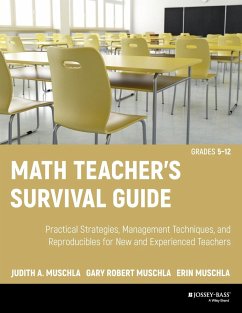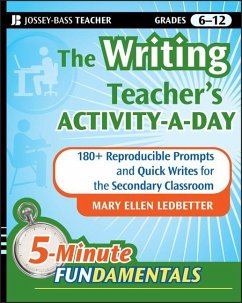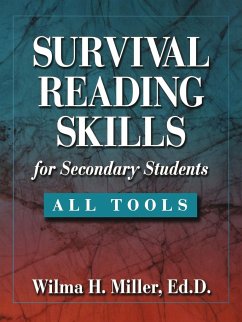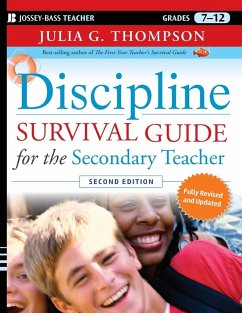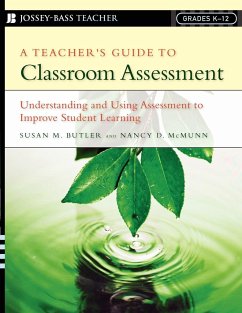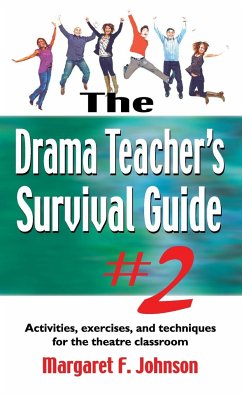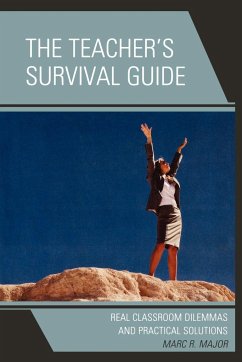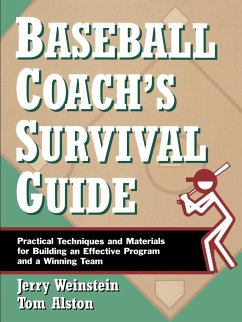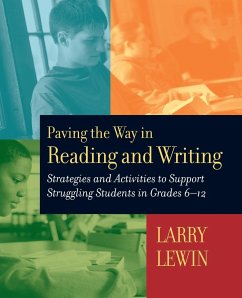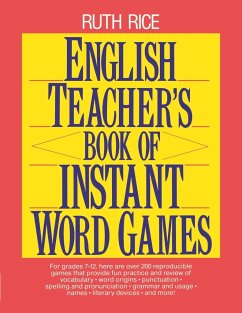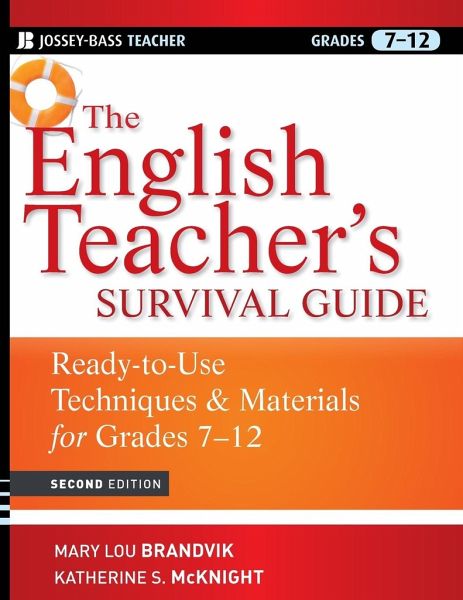
The English Teacher's Survival Guide
Ready-To-Use Techniques and Materials for Grades 7-12
Versandkostenfrei!
Versandfertig in über 4 Wochen
22,99 €
inkl. MwSt.
Weitere Ausgaben:

PAYBACK Punkte
11 °P sammeln!
This unique teacher time-saver is packed with tested techniques and materials to assist new and seasoned English teachers with virtually every phase of the job, from lesson planning to effective discipline techniques. This revised edition of the best-selling book includes 175 strategies, lessons, checklists, and forms for effective classroom management and over 50 reproducible samples teachers can adopt immediately for planning, evaluation, or assignments. As comprehensive as it is easy to apply, the book shows how to practice the art of teaching English effectively, reduce time on labor-inten...
This unique teacher time-saver is packed with tested techniques and materials to assist new and seasoned English teachers with virtually every phase of the job, from lesson planning to effective discipline techniques. This revised edition of the best-selling book includes 175 strategies, lessons, checklists, and forms for effective classroom management and over 50 reproducible samples teachers can adopt immediately for planning, evaluation, or assignments. As comprehensive as it is easy to apply, the book shows how to practice the art of teaching English effectively, reduce time on labor-intensive tasks, and contains * Techniques for organizing teaching units and designing daily lessons * Tested ideas for working effectively with parents, colleagues, substitutes, administrators, and community resources * Information on media literacy and technology * Advice for working with reluctant readers * Creative ideas for reading response activities, writing assignments, group and individual projects, and speeches * Suggestions for handling controversial issues such as confidentiality and censorship "A must-have guide for both novice and experienced secondary English teachers. The book's positive, affirming tone makes you want to be the best teacher you can be. I wish it had been available when I was a new English teacher-it could have made the difference between surviving and thriving." -Thomas G. Gunning, professor emeritus, Southern Connecticut State University




